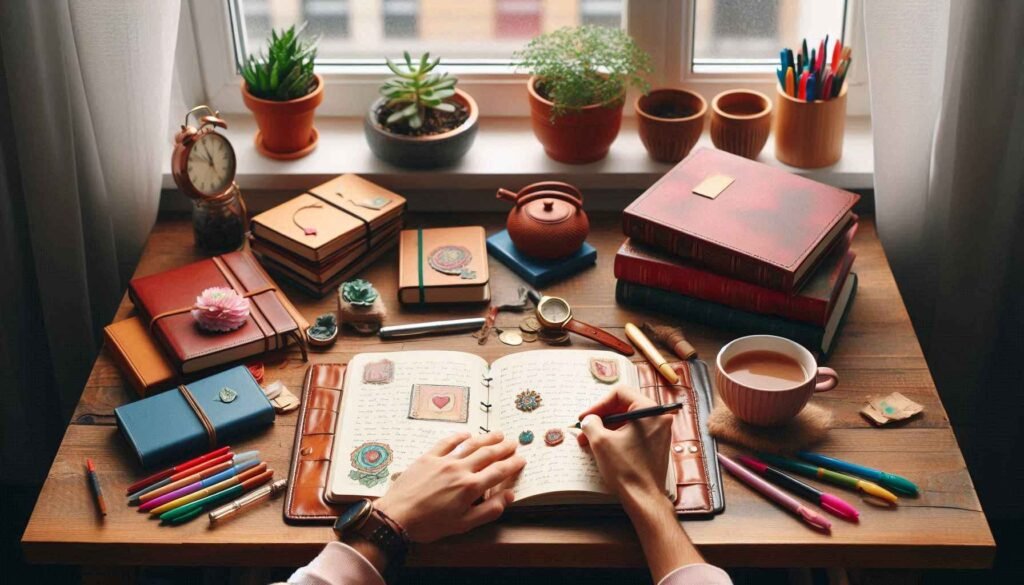
In today’s fast-paced world, most of us are constantly juggling numerous tasks and responsibilities. Whether it’s work, family, social obligations, or simply staying on top of our own health, it can often feel like there’s no time to catch a breath. However, incorporating mindfulness into our daily routines can make a huge difference. The best part? You don’t need hours of meditation or a secluded retreat to experience the benefits of mindfulness. In this article, we’ll explore easy, practical mindfulness techniques specifically designed for those with hectic schedules. Ready to bring some calm into your busy life? Let’s dive in.
Why Mindfulness Matters for Busy People
Mindfulness isn’t just a trendy buzzword; it’s a scientifically backed practice that helps you live in the present moment. Studies have shown that practicing mindfulness can reduce stress, lower anxiety, and improve productivity by helping you focus better on the tasks at hand(
In a world full of distractions and constant demands, mindfulness can help bring you back to what really matters.
Many of us feel overwhelmed by the pressure to do it all. Practicing mindfulness helps us slow down, gain clarity, and handle stress more effectively. Even just a few moments of mindfulness can have a significant impact, helping us stay calm amidst chaos.
1. Mindfulness in Everyday Activities
The beauty of mindfulness is that you don’t need extra time for it—you can integrate it into the activities you’re already doing. Here are some everyday practices that can make a difference:
a. Mindful Showering
A shower is a perfect opportunity to practice mindfulness. Next time you’re in the shower, take a moment to truly experience it. Feel the sensation of the warm water on your skin, listen to the sound of the water as it hits the floor, and breathe in the scent of your soap or shampoo. Whenever your mind wanders to your to-do list, gently bring it back to the present moment(
b. Mindful Eating
How often do you find yourself eating while scrolling through your phone or rushing between meetings? Try this: during your next meal, take the first two bites mindfully. Notice the texture, taste, aroma, and the feeling of the food in your mouth. Even just those two mindful bites can help you slow down and enjoy your meal more(
c. Mindful Commuting
Whether you walk, drive, or take public transport, commuting is a prime opportunity to practice mindfulness. Pay attention to your surroundings—notice the colors of the buildings, the feel of the steering wheel, or the sounds of nature. If you’re driving, try focusing on the feeling of your hands on the wheel or the sensation of your body in the seat. This practice helps reduce stress and brings a sense of awareness to an otherwise mundane routine(
2. Quick Mindfulness Techniques for Stress Relief
Life’s demands often bring moments of heightened stress, and mindfulness can be an effective tool to counteract it. Here are some techniques you can try when you need quick relief:
a. One Breath Practice
Whenever you feel overwhelmed, take a pause and focus on one complete breath. Feel the air entering your nostrils, filling your lungs, and then slowly exiting your body. This simple technique can bring an immediate sense of calm and help reset your mind, even if just for a moment(
b. Air on Exposed Skin
This exercise takes only a few seconds. Find a moment to notice the sensation of air on your exposed skin—whether it’s a breeze on your face or the temperature in the room on your hands. Focusing on this sensation can ground you and bring you into the present, even if you only do it for 10-60 seconds(
c. Body Scan for Tension
Scan your body from head to toe, noticing areas of tension. Is your neck tight? Are your shoulders scrunched? Take a moment to release these tensions, breathing deeply into any tight areas. Body scanning helps you identify and release physical stress, creating a sense of relaxation and awareness(
3. Establishing a Mindfulness Routine
Building a mindfulness habit doesn’t require hours of practice. You can start small and gradually increase your mindfulness time as you feel more comfortable.
a. Use Everyday Activities as Mindfulness Moments
Incorporate mindfulness into activities you already do daily. For example, brushing your teeth can become a mindfulness practice if you pay attention to the movement of the brush, the sensation in your mouth, and the taste of the toothpaste. Washing your hands or having your morning cup of coffee can also serve as mindful moments
b. Set a Timer for Short Meditation
If you have a few minutes to spare, set a timer for a short meditation. Even a 5-minute session can make a difference in your stress levels. Sit comfortably, focus on your breathing, and gently bring your mind back whenever it wanders. Using a timer helps you avoid worrying about time and allows you to fully engage in the practice(
c. Deep Breathing Exercises
Deep breathing is a powerful mindfulness tool. Take a deep breath in, hold for a few seconds, and slowly exhale. Focus on the rise and fall of your belly as you breathe. This type of deep, rhythmic breathing activates the body’s relaxation response, helping you manage stress and anxiety(
4. Mindfulness for Improved Productivity
Mindfulness doesn’t just reduce stress—it also boosts productivity. When your mind is scattered, it’s easy to get distracted and lose focus on your tasks. By practicing mindfulness, you can sharpen your concentration, making it easier to complete tasks efficiently.
Instead of filling every free moment with checking emails or scrolling through social media, try giving your brain a mindful break. Look out of the window, notice the trees, or simply take a few deep breaths. These short pauses can help refresh your mind and enhance your productivity throughout the day(
5. Overcoming Barriers to Mindfulness
Many people think that mindfulness requires setting aside large amounts of time or being in a perfectly calm environment. Let’s bust those myths and explore how you can overcome these barriers.
a. Finding Mindfulness in Moments
You don’t need to set aside hours for mindfulness. Find small moments during your day, like waiting in line or drinking water, to practice. Being present in these moments helps you build a consistent mindfulness practice without adding pressure(
b. Self-Compassion and Mindfulness
It’s natural for your mind to wander or for you to feel frustrated if you can’t stay focused. Remember, mindfulness isn’t about achieving a perfect state of calm—it’s about noticing when your mind has wandered and gently bringing it back to the present. Practice self-compassion, and be kind to yourself when you’re struggling. Every moment of awareness, no matter how fleeting, counts(
6. Tools and Apps for Quick Mindfulness
Incorporating mindfulness into your daily life is easier than ever, thanks to various apps and tools that provide guided meditations and quick exercises.
- Headspace and Calm: These apps offer a variety of guided meditations, including ones that are just a few minutes long—perfect for fitting into a busy schedule.
- Insight Timer: This app provides free meditations and allows you to set a timer with a gentle alarm, ideal for those looking to practice short meditation sessions.
These apps are great for beginners and can help you establish a regular mindfulness routine by offering structure and reminders(
Conclusion
Mindfulness is for everyone—even those with the busiest of schedules. By integrating mindfulness into your daily activities, practicing quick breathing exercises, and using helpful tools and apps, you can experience the benefits of being more present, less stressed, and more productive. Remember, mindfulness is a practice, not a destination. It doesn’t have to be perfect, and you don’t need hours of meditation to feel its effects. Start small, be consistent, and be kind to yourself along the way. The more you practice, the easier it becomes, and the more you’ll see the positive impact on your life.



